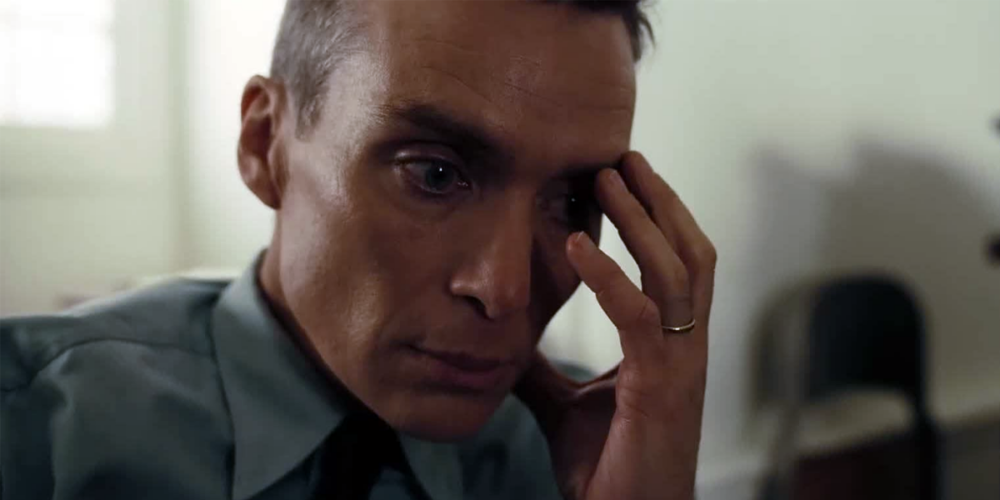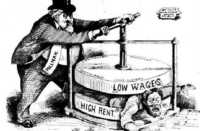The film Oppenheimer begins with a mention of Prometheus, the Greek god who is cursed by Zeus for not abiding by the law, stealing fire and giving it to humans in the form of knowledge.
Oppenheimer is portrayed as a present-day Prometheus who is applauded for using his knowledge of particle physics to produce an atomic bomb to save the world from fascism and is targeted by McCarthyism for standing up against the creation of the hydrogen bomb. The Irish actor Cillian Murphy, who portrays Oppenheimer, handles a range of emotions—despair, self-doubt, arrogance, anger, ecstasy, fear, guilt—with ease.
It is not in our interest to discuss quantum physics, or the aesthetics of the film: we can stick to the politics of it. Martin Luther King is credited with the saying “We live in a world of guided missiles and misguided men.” The film shows how the knowledge that ends up in the hands of misguided men creates a catastrophe.
Necessity is the mother of invention. People cannot just use things from nature, as animals do. Humans have to alter nature through labour to transform things to make it suitable for their purpose. In the transforming of nature through labour, knowledge is gained, and humans are themselves transformed. The necessity to invent new things and to use nature in new ways led to science.
Two billion dollars was allotted to the “Manhattan Project,” the secret laboratory at Los Alamos in New Mexico. The uranium-235 used to make the two atomic bombs, nicknamed Little Boy (Hiroshima) and Fat Man (Nagasaki), was extracted from the mines of Shinkolobwe in Congo, which was a Belgian colony. Germany had surrendered by then, and the atomic bomb was used on Japan, which would have surrendered even if the bomb had not been used. Japan’s delay in surrendering was because of the conditions of surrender, which it wanted altered
The Soviet Union sacrificed a lot of human lives and had already defeated Germany and wanted to attack Japan to end the war. The United States acted quickly to attack Japan before the Soviet Union did, and Hiroshima and Nagasaki were chosen to create maximum damage and send a direct warning to the USSR. In one of the scenes, the scientist Edward Teller says, “The bomb was created to end the world war but it only initiated a cold war.”
During the Great depression (1929–1930) there was a huge drive to join unions, because of large-scale unemployment and price increases. Eric Hobsbawm, in The Age of Extremes (1994), says that a typical British scientist of the 1930s was a member of the left wing. In the United States the left were demonised and portrayed as a national security threat. Oppenheimer’s fellow-academics advised him to keep away from trade union activities and stick to science.
Oppenheimer was radicalised by his association with Jean Tatlock and helped to raise funds for the Spanish Civil War and anti-fascist struggles. He is asked, after the Manhattan Project, “What will you do with Los Alamos?” With guilt he answers, “Give it back to the Indians.”
It’s not surprising for a scientist, whose job is to find solutions to problems, to find socialism as a solution to the misery (in spite of abundance) of capitalist society. Oppenheimer was never a Communist Party member but was a victim of the anti-communist propaganda of Senator Joseph McCarthy during the Cold War. Albert Einstein, Charlie Chaplin, Langston Hughes (poet) and Linus Pauling (Nobel prizewinner) were victims of anti-communist hysteria. The motive of McCarthyism was to keep people away from alternative politics and to strangle the trade union movement so that the working class could be freely exploited by capitalists.
The creation of internal enemies was essential to the creation of a fear psychosis among people to keep them away from communism. Trade union leaders and socialists were branded security threats to the United States.
Greg Mitchell, who wrote The Beginning or the End (2020), in an interview with Amy Goodman makes three important criticisms of the film.
- It doesn’t say anything about the radioactive contamination and the effect the Manhattan Project had on the people of Los Alamos.
- It doesn’t say anything about the 85 per cent civilian casualties caused in Hiroshima and Nagasaki.
- It is misleading in that it shows Oppenheimer feeling guilty about using the bomb, whereas in reality he defended using the bomb till the end of his life.
The film exposes how communism was stigmatised during the Cold War years, the hypocrisy of US democracy during the McCarthy era, and the kick-starting of the nuclear arms race after the Second World War.
Pandora’s box was opened, and the world would never be the same.






